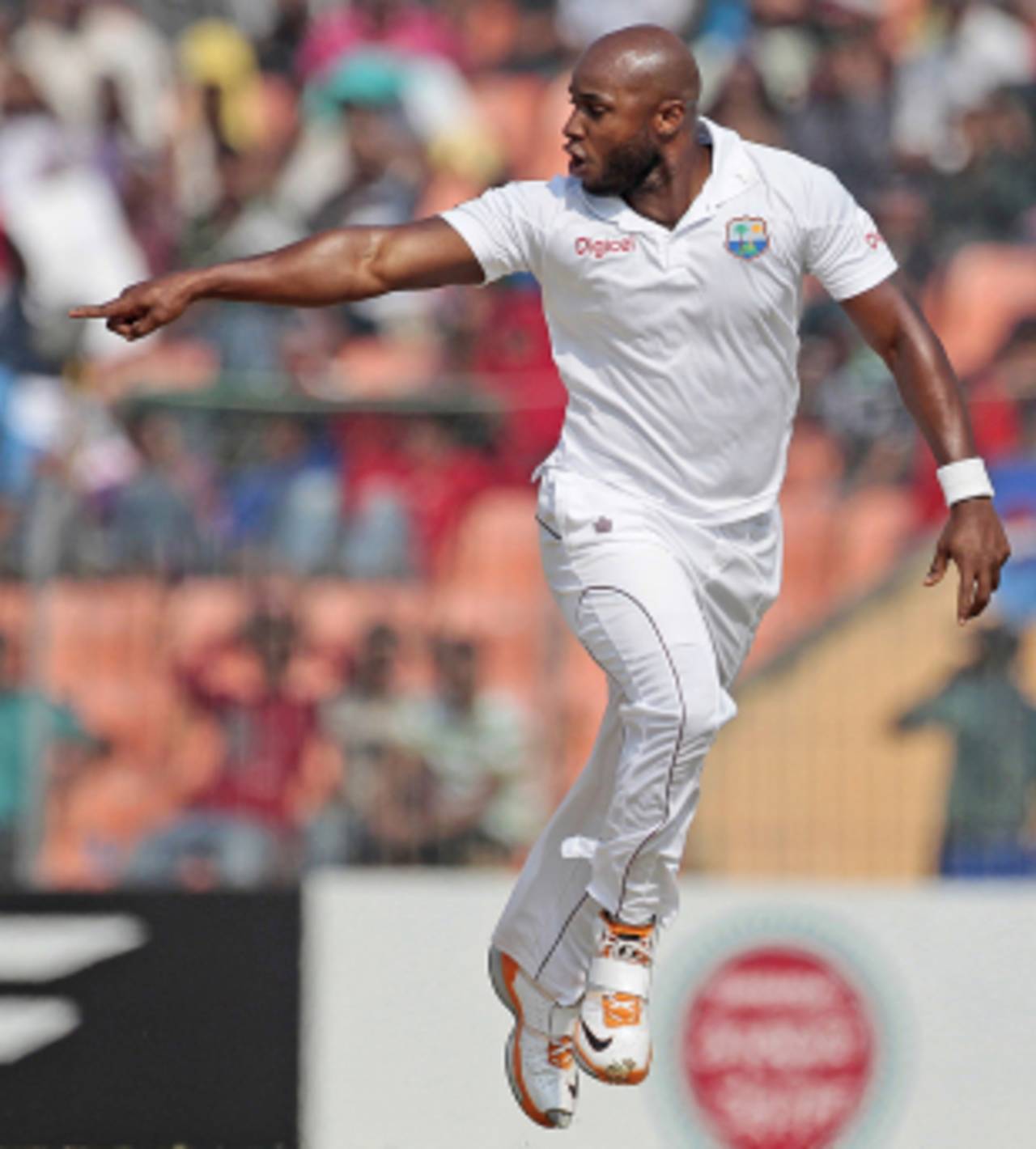Scoreboard pressure is a term you hear in the game these days. When Bangladesh's openers went out to start their second innings knowing they were already 261 runs in deficit, that pressure must have been heavy upon them. And the West Indies fast bowlers did not ease up.
For all the runs the West Indian batsmen scored in the two Test matches, it's the performance of their pace bowlers that has been striking.
Tino Best's five-wicket second-innings burst won the
Mirpur Test for his team, and
in Khulna, he was joined by
Fidel Edwards in wiping away Bangladesh's resistance.
While competent against spin, the Bangladesh batsmen find good fast bowling unsettling. Even on the placid pitches they know well, they were unable to deal with what the West Indian quicks served up.
Two bowlers who started this tour on the fringes of the first team had ensured that for the second series in succession, and for the first time overseas in ten years, West Indies achieved a clean sweep. Darren Sammy's team did it the old West Indian way.
Best and Edwards are anything but fresh new finds. Plucked from the nets by Brian Lara and thrown into Test cricket in 2003, Edwards was playing his 55th Test in Khulna, and now with 165 wickets has proved the most durable bowler since the era of Courtney Walsh and Curtly Ambrose ended 11 years ago. Best, afflicted more by his mercurial nature and form rather than injury as in the case of Edwards, also started in 2003, but was playing only his 18th Test in Khulna.
Had Kemar Roach been fit for the series and Ravi Rampaul not suffered groin problems, neither Edwards nor Best would have been on the field. But they seized their chances.
Edwards, sometimes inconsistent and expensive with his slinging action, but always a bowler of great heart and aggression, took six wickets in the first innings in Khulna, with his quick, full-pitched style, making up for the absence of the hamstrung Best after lunch on the first day. Despite Abul Hasan's startling debut century, Bangladesh had been contained to what proved to be an inadequate 387 in the conditions.
The relentless scoring of Marlon Samuels, Shivnarine Chanderpaul and Darren Bravo gave Sammy and his fellow bowlers a substantial lead to defend. They could bowl with freedom.
Even though he could not go flat out, Best was amazingly effective. The fact that he took to the field at all was a surprise, but used as the fourth bowler, he was the one who sent Bangladesh into decline. He proved once more that, first and foremost, fast bowling is a state of mind.
Like the great Essequibo River in his native Guyana, there seems no stopping Chanderpaul's flow these days
Sheer pace and a loose technique removed Tamim Iqbal, inswing deceived Naeem Islam, and a pinpoint bouncer had Shahriar Nafees fending to the slips - all in Best's first three overs. His stump-to-stump accuracy brought him three more wickets on the final day and produced a new career-best - 6 for 40.
The new maturity of Best, the way he has harnessed himself since returning to international cricket this year, has been refreshing. His contribution and Edwards' better form have meant that the West Indies bench has not been just making up the numbers, as has often been the case.
Their success counterbalanced the failure of Sunil Narine to have an impact on the series. Good teams get contributions when needed. Veerasammy Permaul played his part with eight useful wickets in the two Tests, the biggest one being Shakib Al Hasan's in the final over on the penultimate afternoon in Khulna.
The batsmen also shared the workload. Samuels, so driven to succeed, so steady in concentration and excellent in his strokeplay, took over from Kieran Powell - who scored two hundreds in Mirpur - with his 260. Then Chanderpaul and Bravo's tons gave their bowlers a platform from which to win the game.
Grinding out runs is Chanderpaul's stock in trade. And he was as resolute and as immovable as ever in getting single and double-centuries in consecutive Tests and
averaging over 350 in the series. Like the great Essequibo River in his native Guyana, there seems no stopping his flow these days.
But the patience that Chanderpaul's more naturally flamboyant team-mates showed in building their innings in this series was even more impressive.
So Sammy's side did what was expected, but they did so in convincing style. Making sweeping statements based on a single series or even two is risky, especially on behalf of West Indies. Those rubbers have been against the two teams below them in the rankings. But it is fair to say that West Indies' cricket since the England tour in July has been increasingly confident and cohesive, even when bad habits resurfaced.
Despite the sudden slump in the second innings in Mirpur, they came up with the appropriate response to win by 77 runs. When Bangladesh rallied from 193 for 8 to make 387 in this second Test, the bowling response was emphatic.
Coach Ottis Gibson, a former seamer himself, must be a fairly contented man these days. His boys are picking up the pace.
Garth Wattley is a writer with the Trinidad Express
